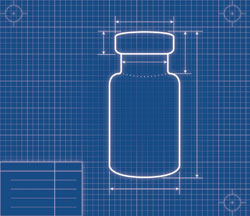
Experts discuss the future of modular manufacturing and the challenges that biopharma manufacturers face in facility design.
Facility design is an important aspect of biopharmaceutical manufacturing. “Global deployment, cost pressure, time to market, and change/uncertainty” are some of the factors biopharma companies need to consider, according to Par Almhem, president of Modwave. And, the trend towards flexible and modular designs continues to grow.
BioPharm International spoke with Daniella Kranjac, head, evaluation and offering, Enterprise Solutions, at Cytiva; Mario Philips, president of Single-Use Technologies at Pall Life Sciences; Par Almhem, president, Modwave; and Maik W. Jornitz, president of G-Con Manufacturing about the challenges and innovations of biopharmaceutical facility design.
Challenges in Biopharma Facility Design
BioPharm: What top challenges do companies face when designing a biopharmaceutical facility?
Kranjac (Cytiva): Biopharma-ceutical companies have to carefully consider parameters such as facility design, quality, time and cost for construction, and regulatory requirements. The quality of the facility is an important factor, including ensuring that the construction and materials used meet regulatory manufacturing standards.
Philips (Pall Life Sciences): With the current cost pressures facing the industry, the number one challenge for biopharmaceutical companies can often be determining the economic viability of a facility design–the goal is to find a design that best minimizes capital investment and long-term operational costs in the facility, while still meeting the production needs the company has.
In the case of producing a blockbuster drug, a large-scale stainless steel facility might actually be the most economical choice, especially if you have low titers and are starting from high-volume bioreactors (>5000 L).
Yet in most cases, companies will have a need to produce multiple products in one facility. This is where single-use, modular-designed facilities offer the best economic viability. Modular facilities also boast the added benefits of flexibility, as well as the highest security from a cross-contamination and regulatory perspective.
Regulatory Requirements
BioPharm: Are there specific regulatory requirements to be considered when designing a biopharma facility?
Philips (Pall Life Sciences): Regulatory requirements are not changing–assurance of product quality and patient safety remain central, which can create challenges for modular manufacturing designs. Companies taking advantage of these designs must remain focused on creating and implementing proper risk-management strategies to mitigate (and eliminate) potential product contamination, whether from planned or unplanned breaches in multiproduct production scenarios.
Kranjac (Cytiva): Personnel flows, raw material and finished product flows, waste flows, and pressurization requirements are the specific regulatory requirements to be considered when designing a biopharmaceutical facility.
Quality control and building standards are also essential, with a view to meeting [European Medicines Agency] EMA, FDA, [Chinese Food and Drug Administration] CFDA, and other regulatory standards for product manufacture. Ensuring buildings, whether stick built or modular, comply with international standards, such as Deutsches Institut für Normung (DIN), European Standards, International Organization for Standardization (ISO), and Verband der Electrotechnik (VDE), is necessary. Materials that fall under EMA, FDA, CFDA, and other regulatory body standards might be used to construct modules’ floors, walls, and ceilings. Other local standards such as protection against earthquakes and climate control require serious consideration.
Trends and Innovation
BioPharm: What are the current trends in biopharma facility design? Are there new innovations you see influencing the future of facility design?
Almhem (Modwave): Trends are towards smaller facilities implemented at a significantly lower cost than in the past. The focus is shifting from a few large facilities serving the world market to smaller facilities serving regional needs. Flexibility, cost efficiency, and speed are characterizing the new generation facilities. High-yield processes, single-use equipment, and modular concepts are tools contributing to the ability to meet the demands of these new facilities.
Kranjac (Cytiva): As bioprocess infrastructure transitions from large facilities, which traditionally produce only one biotherapeutic, biopharmaceutical companies are increasingly seeking flexibility in design. The ability to produce more than one biomolecule, for example by incorporating single-use capacity, supports smaller-batch production of ‘niche’ medicines. Adapting legacy facilities to this more flexible design is pivotal to adopting this change, in addition to its application in newer facilities. Decreasing the time for batch production via single-use systems intensifies the value derived from smaller batches. The reduced capital investment required for single-use facilities can be as much as 1050% of the cost of traditional stainless-steel systems (1).
BioPharm: Is flexibility becoming increasingly important in biopharmaceutical manufacturing? What do you see as the key drivers in this need for flexibility?
Jornitz (G-Con Manufacturing): I believe it is a multitude of key drivers [including] cost of goods sold (COGS) and capacity utilization. Everybody wants to use their production capacity to the fullest, which brings down COGS and, therefore, requires either multi products run through a process or being able to easily scale the process without production interruptions by requalification measurements. Furthermore, single-use technology supported the new flexibility trend in the process technologies, but that flexibility is still hindered or compromised by facility inflexibility. Therefore, new flexible facility designs, which enable, if not enhance single-use technology flexibilities and capabilities are asked for. Another factor is the requirement to produce in country/for country with smaller volumes and, again, multi-products running through the process and facility.
Philips (Pall Life Sciences): The key drivers and trends I see for more flexibility are:
• Regional requirements (i.e., the need to deploy manufacturing rather than centralize it all in one location)
• Personalized medicine–these batches are smaller and more targeted; they require the flexibility and safety of modular manufacturing
• Technology enhancements in cell biology (titer) and format (single-use)
• Overall cost pressures in the global health care system.
Kranjac (Cytiva): Drivers such as speed-to-market, as well as multi-product campaigns requiring different production schedules, have fueled an increased need for flexibility. Reduced scale considerations such as the ability to make smaller batches of biopharmaceuticals for innovative or personalized therapies, or those for rare diseases, have all contributed to the current demand for flexibility in biopharmaceutical manufacturing. Such smaller-scale approaches, enabled by flexible single-use and modular facility construction, may allow new applicants to enter into biopharmaceutical production. It may also facilitate outsourcing of production to contract manufacturing organizations, which can, therefore, rapidly switch between customer projects and campaigns. Some contract manufacturing organizations are able to offer companies both the traditional pay-per-run approach and also a virtual ownership model, which gives clients control of dedicated capacity without the cost of traditional capital investment. Typically, batch capacity requirements can be adjusted between 50-L and 2000-L scale, depending on process requirements.
Almhem (Modwave): The main driver for flexibility is uncertainty. This involves many aspects, from market as well as scientific and technological perspectives including:
• Product efficacy and approval–will it at all get to market?
• Market demand
• Size and frequency of doses
• Process yields
• Manufacturing challenges and innovations
• Cost and schedule pressure
• Globalization
Combined, these factors form significant drivers for flexibility. Only by being lean, fast, and flexible is it possible to be viable long-term in an increasingly competitive market.
Modular Construction
BioPharm: What do you see as the most important aspects of modular manufacturing in adding flexibility to manufacturing? Can you comment on specific areas for biopharm vs. traditional pharma?
Kranjac (Cytiva): We view modular manufacturing as the same as flexible manufacturing, and it is something that can be achieved in a number ways, depending on the needs of the biopharmaceutical manufacturer. Although traditional ‘stick-built’ facilities were historically preferred for biopharmaceutical production, modular constructions are a growing trend. Technological advances in quality and sophistication achieved over the past 20 years have made modular construction a competitive alternative to ‘stick-built’ in terms of cost, quality, and time. Reducing the time required for the critical engineering design phase of construction means that site and foundation work, and module construction are conducted in parallel, reducing overall time and potentially increasing speed to market. In fact, modular construction can reduce length of time from design to approval by almost half compared to stick-built designs, from 3036 months to 1418 months.
We have designed a turnkey modular factory, KUBio, which offers a monoclonal antibody manufacturing factory within 14-18 months and is pre-designed to support achieving cGMP requirements.
For biopharmaceutical companies looking to repurpose existing production buildings for greater flexibility and to take advantage of the benefits of single-use technologies, we offer the FlexFactory, which is a centrally-automated biomanufacturing platform.
Philips (Pall Life Sciences): The ‘ballroom’ concept is often defined as a large manufacturing area with no fixed equipment. Modules are used to minimize segregation with closed systems and allow for parallel operation.
The biggest advantage of this type of modular approach is flexibility. It enables multiproduct manufacturing because of faster changeover. Additionally, there are significant reductions in capital costs, including savings from the changes in overall facility footprint, like reduced HVAC and clean/steam-in-place utilities, as well as the need for less classified cleanroom space.
Almhem (Modwave): Main drivers for modular design and construction in biopharmaceutical and pharmaceutical process facilities include breaking down the facility and the manufacturing processes into functional building blocks/modules, which creates opportunities to simplify, standardize, verify, and re-use designs as well as actual modules in different implementations. This adds significant flexibility as it allows for plug-and-play functionality to add or replace functional elements or process steps in a seamless way.
Breaking down the facility and the manufacturing processes into physical building blocks/modules creates opportunities to build the modules off-site, typically in a factory specifically designed for this purpose. Combined with functional modularity, this adds additional flexibility at the same time as it offers increased quality and reduced timelines to implement a pharmaceutical or biopharmaceutical process or facility.
In biopharm applications, the use of self-contained unit operations, often based on single-use equipment wrapped in an enclosure providing a local cleanroom environment in a multi-product facility, is an example frequently used to illustrate modular manufacturing concepts. Other concepts include complete cleanroom suites for a certain process implemented in modules–either as self-contained units or as parts/modules making up an integrated process or facility.
BioPharm: How would you describe the current use of modular construction and what trends do you see for the future in biopharmaceutical manufacturing?
Jornitz (G-Con Manufacturing): Modular structures replaced the traditional brick-and-mortar structure, but now modular stick built or container built becomes obsolete, since these structures, once connected, are just as inflexible as the old traditional structures (2, 3). Most of these systems cannot be repurposed and do not have the flexibilities required. Therefore, modular designs will be replaced by podular designs in the near future. The pull from the industry for podular designs is tremendous. The benefits of podular cleanroom and facility designs are well recognized and will create a new shift within the industry. These structures can be used for laboratory purposes, unit operations, or whole facilities, which then could become cloneable facility platforms or enter into new production needs, for example for the cell therapeutic and personalized medicine market.
Kranjac (Cytiva): Beyond monoclonal antibodies, adapting modern flexible, modular construction and single-use processes towards the efficient production of vaccines and other biomolecules is a key trend. Such processes are markedly more complex, and include variations in process configurations and regulatory aspects.
Philips (Pall Life Sciences): There is a clear trend toward modular facilities in combination with single-use technology. This [trend] ranges from hybrid concepts, where stainless steel and single use are both used for production, to almost completely single-use, fluid-path approaches.
In my opinion, the coming years will see companies optimizing the modular single-use concept in combination with continuous processing because of the advantages it offers. These advantages include further reduction in manufacturing footprint and [capital expenditures], in combination with an opportunity for more robust processing because there is a higher degree of automation and reduction in manual interaction.
It is likely that the facilities of the future will combine single-use technology through the ‘ballroom’ manufacturing concept, taking advantage of the benefits from closed processing and continuous manufacturing. There is also talk of tabletop manufacturing approaches, which will be interesting to watch develop.
Almhem (Modwave): While there are an increasing number of modular pharmaceutical and biopharmaceutical manufacturing facilities, the adoption remains lower and slower than most other industries. Recently, there has been a significant interest in and buzz around modular concepts, and it is likely that the rate of adoption will increase. The combination of market pressure and the development of new technologies (e.g., single-use equipment, and continuous processing) increase both the need for and viability of an increased use of modular concepts also in the pharmaceutical and biopharmaceutical industries.
Sidebar: Modular Facility Design
BioPharm International spoke with George Wiker, vice-president, US-Life Sciences and Chemicals Market Segment Lead, M+W, about the benefits, challenges, and use of modular building.
BioPharm: What do you see as the key benefits of modular building in biopharmaceutical manufacturing?
Wiker (M&W): Key benefits of modular building include predictability (i.e., modules are pre-engineered and pre-defined) and faster execution that speeds up ‘time to manufacturing’. The construction schedule is accelerated and equipment can be installed and quickly made operationally ready. Although the actual cost of the physical materials might be 510% more in a modular construction, the net present value is better because construction is faster. With this modular approach, you can add capacity when it is needed by the market, creating a successful outcome. Expandability (i.e., ‘bolt-on’ capacity) and repeatability (i.e., the ability to replicate plants) are key advantages.
BioPharm: How would you describe the actual current use of modular construction and what trends do you see for the future?
Wiker: The current commercial use of modular buildings is limited. The ‘spectrum of modularity’ is broad, which is great since it provides customers a variety and range of options, and creates market competition. Also on the spectrum are complete cleanrooms (i.e., pods), which are available today, and expected to be more widely used in the near future. These can be purchased with a variety of options (e.g., with or without utilities and process systems).
Product processing systems are also becoming modular, with ‘plug-and-play’ equipment that can be rolled into a cleanroom suite, bolted-on, and started up quickly. While one module is operating, we can install another module right next to it. Once the new module is qualified and fully functional, we can interconnect the two with just a short interruption (e.g., over a weekend) to the existing process. Current market demand is still ‘young’ and conservative, yet should develop over the next two to three years.
BioPharm: What are the primary challenges in implementing modular construction?
Wiker: The market still does not fully understand the value of modularity and has not grasped that modularity is closely linked with standardization and the ability to quickly and easily replicate modules. Although clients often select modular systems for process and facility systems, they often customize those systems, thus diminishing the value by increasing cost and lengthening the overall project schedule. As the biopharmaceutical market becomes more commoditized (similar to food and nutrition), these clients will likely have little choice but to utilize standardized modular systems to rapidly and predictably develop manufacturing infrastructure.
References
1. J. Walter, The Disposable Facility and Single-Use Technology-a Solution or a Revolution?, BioPharma Asia: pp 36-49 (2012).
2. A. Pralong, Biopharma Asia Magazine 2 (1) (2013).
3. M.W.Jornitz, “Defining Flexible FacilitiesWhen is a Flexible Facility Being Flexible?” Pharmapro.com (2013).
Article Details
Sep 1, 2014
By: Susan Haigney
BioPharm International
Volume 27, Issue 9, pp. 26-30





